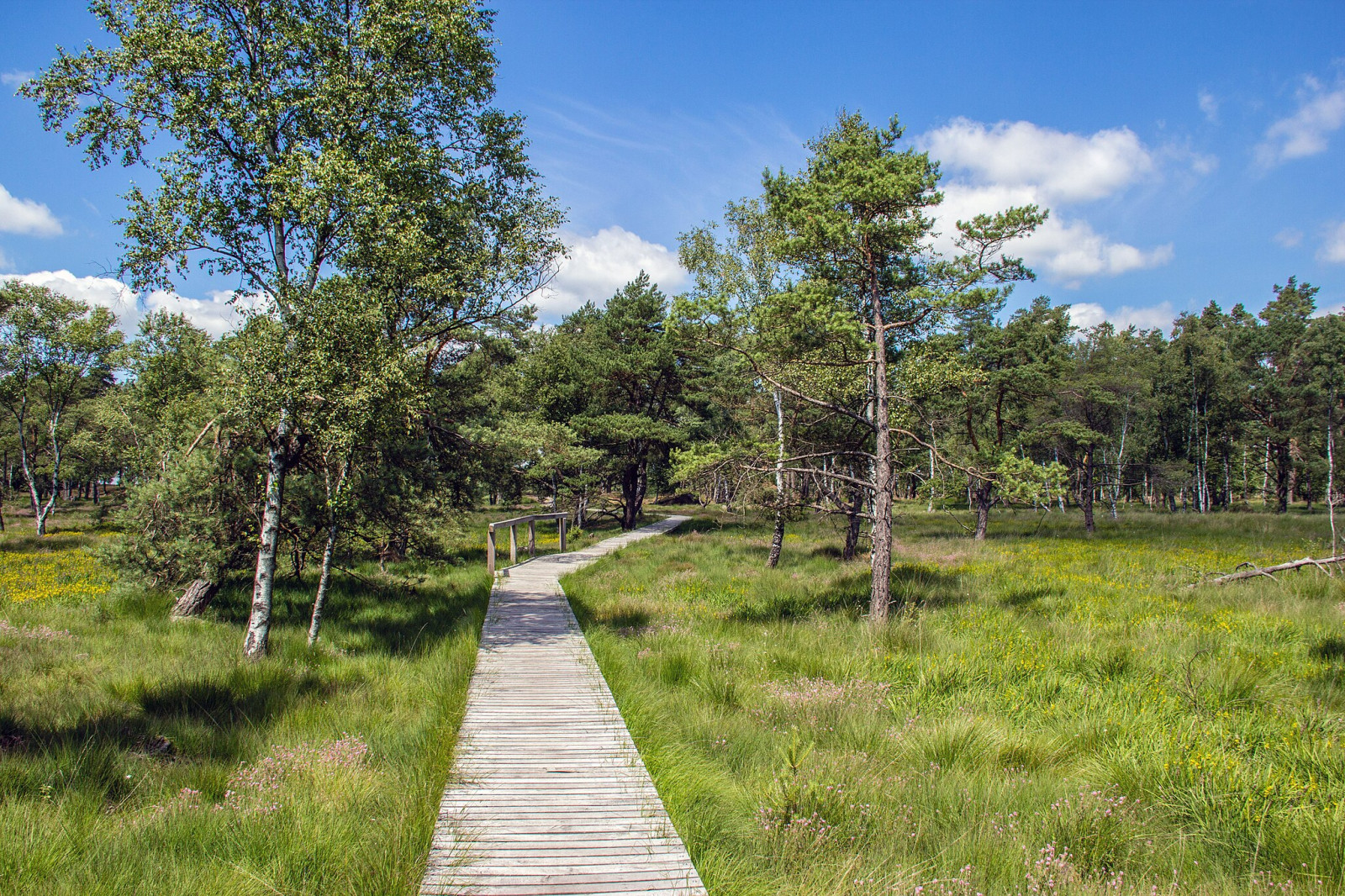Opis
The Pietzmoor is a big moor on the southern edge of Lüneburg Heath Nature Reserve and covers an area of about 2.5 km. The area has cotton grass, large bodies of water and dead trees that tower into the air. You can explore the area on long raised wooden walkways. There are floating grass islands of various sizes, Sphagnum moss on the banks and in the water. Thanks to a successful restoration, Pietzmoor is now able to re-grow. The area is a refuge for waterfowl. There are lush green meadows all around, bordered by trees and bushes that offer variety and habitat for numerous birds and insects.
Among the birds you can observe in the area are cyraneczka, głowienka, czernica, gągoł, perkozek, żuraw, jastrząb, dzięcioł czarny, wilga (zwyczajna), gąsiorek, srokosz, skowronek , paszkot, muchołówka szara, słowik rdzawy, pleszka, kopciuszek, białorzytka, trznadel and muchołówka żałobna.
Szczegóły
Dostęp
The Pietzmoor is located in the southwestern part of the Lüneburger Heide near the town of Schneverdingen. You can walk along a 5 km long circular trail on a boardwalk right through the moor landscape. Starting point of the walk: car park Wanderparkplatz Schäferhof (Schäferhof, 29640 Schneverdingen). Public transport connections: Niederhaverbeck - Schneverdingen: Bus line 156 (Schneverdingen train station), Heidebahn erixx: (Buchholz - Soltau), Heide Shuttle: 15 July to 15 October.



